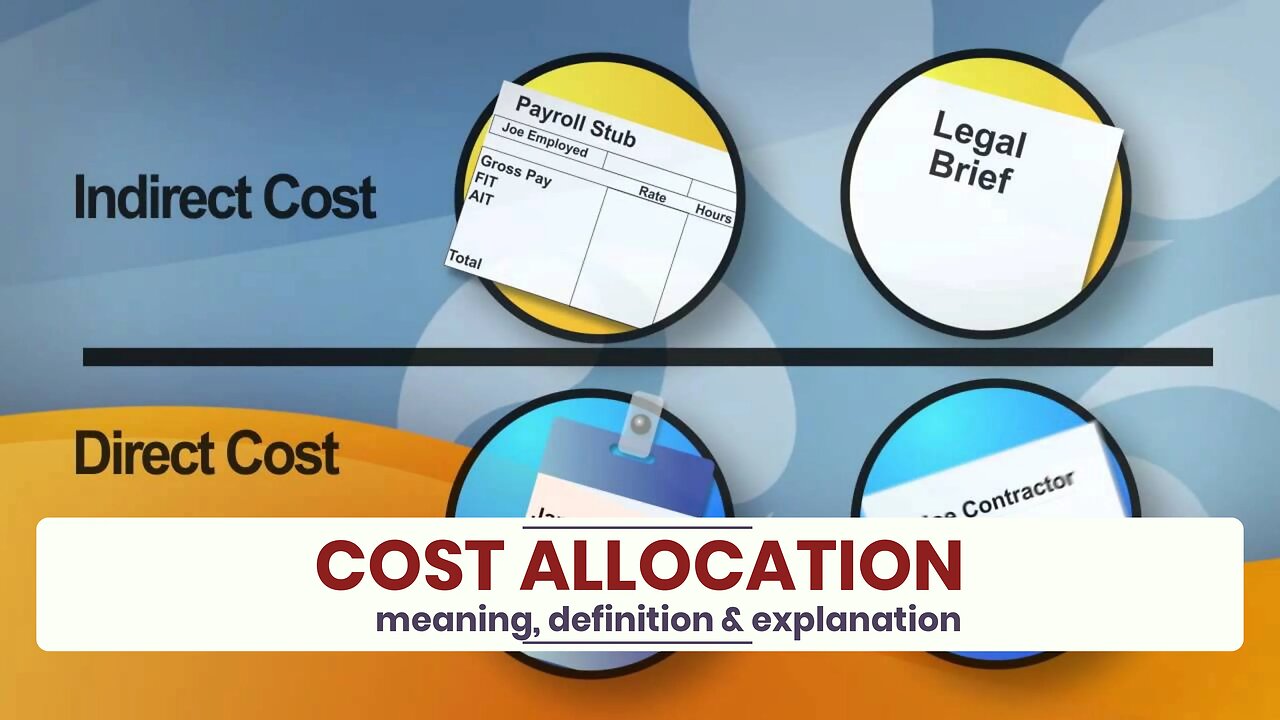Premium Only Content

What is COST ALLOCATION?
✪✪✪✪✪
http://www.theaudiopedia.com
✪✪✪✪✪
What is COST ALLOCATION? What does COST ALLOCATION mean? COST ALLOCATION meaning - COST ALLOCATION definition - COST ALLOCATION explanation. What is the meaning of COST ALLOCATION? What is the definition of COST ALLOCATION? What does COST ALLOCATION stand for? What is COST ALLOCATION meaning? What is COST ALLOCATION definition?
Cost allocation is a process of providing relief to shared service organization's cost centers that provide a product or service. In turn, the associated expense is assigned to internal clients' cost centers that consume the products and services. For example, the CIO may provide all IT services within the company and assign the costs back to the business units that consume each offering.
The core components of a cost allocation system consist of a way to track which organizations provides a product and/or service, the organizations that consume the products and/or services, and a list of portfolio offerings (e.g. service catalog). Depending on the operating structure within a company, the cost allocation data may generate an internal invoice or feed an ERP system's chargeback module. Accessing the data via an invoice or chargeback module are the typical methods that drive personnel behavior. In return, the consumption data becomes a great source of quantitative information to make better business decisions. Today’s organizations face growing pressure to control costs and enable responsible financial management of resources. In this environment, an organization is expected to provide services cost-effectively and deliver business value while operating under tight budgetary constraints. One way to contain costs is to implement a cost allocation methodology, where your business units become directly accountable for the services they consume.
An effective cost allocation methodology enables an organization to identify what services are being provided and what they cost, to allocate costs to business units, and to manage cost recovery. Under this model, both the service provider and its respective consumers become aware of their service requirements and usage and how they directly influence the costs incurred. This information, in turn, improves discipline within the business units and financial discipline across the entire organization. With the organization articulating the costs of services provided, the business units become empowered – and encouraged – to make informed decisions about the services and availability levels they request. They can make trade-offs between service levels and costs, and they can benchmark internal costs against outsourced providers.
-
 1:26
1:26
The Audiopedia
8 months agoWhat is MOTTO?
47 -
 1:04:22
1:04:22
Timcast
4 hours agoTrump Orders ALL TRANS MILITARY Discharged, Trans Person CAUGHT With BOMBS At Tesla Dealership
103K112 -
 2:01:41
2:01:41
LFA TV
18 hours agoPAYBACK = JUSTICE! | LIVE FROM AMERICA 2.27.25 11AM
54.4K17 -
 DVR
DVR
Bannons War Room
9 days agoWarRoom Live
2.4M417 -
 2:17:39
2:17:39
Matt Kohrs
13 hours agoBREAKING MARKET NEWS: Bounce or Bust?! || The MK Show
69.6K1 -
 47:26
47:26
BonginoReport
6 hours agoEpstein Files Drop Today-But How Much Will They Reveal? (Ep.149) - 02/27/2025
142K167 -
 2:59:16
2:59:16
Wendy Bell Radio
9 hours agoThe Left Is Wrong About Everything
112K57 -
 29:05
29:05
CatfishedOnline
22 hours ago $4.32 earnedThe Real Jennifer Aniston or Another Romance Scam?
55.9K14 -
 34:44
34:44
LFA TV
6 days agoMIRACLES DO HAPPEN!
88.2K2 -
 16:43
16:43
T-SPLY
7 hours agoCNN Panel Member Forgets Donald Trump Runs The Military
54.8K26